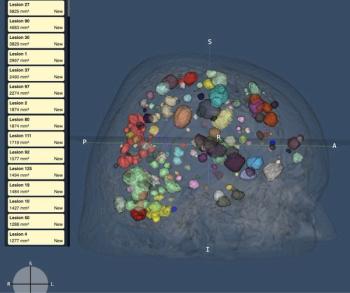
Contrast ultrasound vies with CT in abdominal trauma
Contrast-enhanced sonography could be just as good as CT to detect solid organ injuries in patients with blunt abdominal trauma, even in the absence of free intraperitoneal fluid. Data from Italian researchers suggest that CE ultrasound could reduce the need for abdominal CT in emergency radiology.
Contrast-enhanced sonography could be just as good as CT to detect solid organ injuries in patients with blunt abdominal trauma, even in the absence of free intraperitoneal fluid. Data from Italian researchers suggest that CE ultrasound could reduce the need for abdominal CT in emergency radiology.
Focused assessment with sonography for trauma (FAST) has been for decades the primary screening examination for blunt abdominal injury in Asia, Europe, and, to a lesser extent, the U.S. and Canada. FAST protocols for unstable patients have typically relied upon suspected links between solid organ injuries and free fluid, namely hemoperitoneum.
Recent studies in stable patients, however, have shown that more than one-third of solid organ lesions can occur without hemoperitoneum, hindering sonography and favoring CT as the imaging standard. In the meantime, the use of multislice CT scanners in the ER has boomed at the expense of conventional unenhanced abdominal sonography. Contrast-enhanced sonography could restore FAST prominence in this setting, according to principal investigator Dr. Massimo Valentino, an ER radiologist at the University of Bologna's S. Orsoloa-Malpighi Hospital.
"My physicians were a little skeptical at first and continued to place more importance on CT," Valentino said. "But after some cases, they changed their attitude completely, and now they greatly appreciate this tool. They often ask me to carry out contrast-enhanced ultrasound to rule out possible injuries to the solid organs of the abdomen, especially the spleen."
Valentino and colleagues performed standard unenhanced sonography, contrast-enhanced sonography, and CT on 69 nonconsecutive and hemodynamically stable patients during a two-year period. All patients presented with blunt abdominal trauma from vehicle-, work-, and sports-related accidents and had strong clinical indications of abdominal organ lesions.
The investigators found CE sonography more sensitive than conventional sonography and almost as sensitive as CT in the detection of traumatic abdominal solid organ injuries (AJR 2006;186[5]:1361-1367).
CT scanning confirmed 35 abdominal injuries in 32 patients, mostly spleen, kidney, and liver lesions. CE sonography detected 32 of these lesions, while conventional sonography detected only 16. CE ultrasound's sensitivity, specificity, and positive and negative predictive values were 91.4%, 100%, 100%, and 92.5%, respectively. The data validate previous findings showing that CE sonography is more accurate and informative than standard sonography and that it correlates better with CT.
"In our study, contrast-enhanced sonography revealed parenchyma lesions that were not visible on sonography, thereby permitting more confidence in the clinical assessment of the trauma patients," the researchers said.
CE ultrasound provided a better definition of injuries' extensions and limits - even subtle injuries affecting the spleen - which was relevant for surgery evaluation. CE sonography also showed angiographic findings that used to be the exclusive territory of CT, such as contrast medium extravasation, parenchyma infarction, and vascular pedicle avulsion, the researchers said.
CE sonography could replace standard sonography in the triage of hemodynamically stable trauma patients, reserving CT for patients with negative findings and clinical suspicion of injury. It could also be used for the follow-up of solid organ lesions treated conservatively, they said.
"Contrast-enhanced sonography cannot completely replace CT, but it can reduce its use as a screening method," investigators concluded.
For more information from the Diagnostic Imaging archives:
Newsletter
Stay at the forefront of radiology with the Diagnostic Imaging newsletter, delivering the latest news, clinical insights, and imaging advancements for today’s radiologists.




